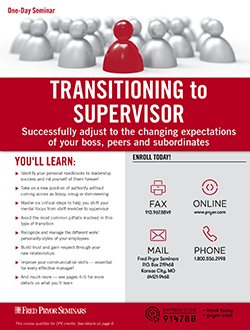Learning From Failure: A Failed Fit

This article looks at failure from the lens of fit in an organization. It is said often and easily when someone quits or is actively or passively pushed out: “Oh, she just wasn’t a good fit.” Given the effort invested in hiring someone, however, when someone leaves due to a “failure of fit,” it is a failure for everyone. Let’s look at what we can learn from this specific type of failure.
Looking at the Meaning of “Not a Good Fit”
When someone is said to be “not a good fit” in an organization, they often mean the person’s personality, work style, values or attitudes do not align well with the team’s dynamic or organizational culture. In many cases, the technical skills are not part of this “lack of fit” determination – a person was hired based on skill, and they do indeed have those skills.
So, what happened? Here are some of the factors to consider – both for the employee and the employer – when the question of fit is being asked.
- Personality and work style. There are many examples of personality and style differences – often based on organizational norms and assumptions. An extravert operating in an introverted office can appear loud and intrusive; an introvert working in an extraverted office can seem cold and uninterested. Someone may hand in a paper in draft form, because at an old job, the boss wanted to give feedback early and often – this new job, handing in a product prematurely could be seen as “sloppy” and labeled a work style issue if expectations are different.
- Team dynamics. “Teamwork” or “being part of a team” means different things to different people and organizations – a person might not mesh well due to different expectations about independent versus collaborative work. This may result in communication issues and conflicts. A person used to doing the work alone and then sharing with the team may struggle when a new team expects to be more involved from the start.
- Adaptability and flexibility. If an employee keeps flexible hours because that was the norm at their last position, but the new culture is more structured, that could be considered a “bad fit.” If priorities constantly change in the new job, but the employee is used to staying dedicated to a single task until completed, that could also cause a challenge. If someone struggles to cope with changes or lacks adaptability, or the organization fails to communicate expectations, it can hinder their success in the organization.
- Cultural misalignment. Ah yes, the mystical “culture” bucket. Every organization has its own unique culture, which includes its values, mission, processes, stories and history. While many organizations claim to want diversity, too much difference can lead to the assessment that the person “just doesn’t get our culture.” Given that it is hard to capture culture in an onboarding presentation, this one is particularly hard to navigate for new employees, especially when more employees are teleworking or remote.
- Motivation and commitment. Maybe an individual took a job because they were looking for a position closer to home – or they thought it would have more consistent or fewer hours while caring for parents. If the person does not appear to have the level of expected motivation due to outside demands in a workaholic culture, it could be perceived by others to be a lack of commitment and dedication to their tasks.
Ways to Avoid a Failure to Fit
Of course there will be hiring errors! Organizations bring people in with certain expectations, and they are not always met. People pick jobs for the wrong reasons – perhaps in running away from something else, they don’t truly consider the pros and cons of the new job.
Thoughtful and effective communications can avoid the common challenges leading to an assessed lack of fit. Hiring organizations and supervisors need to:
- Be specific about expectations and work patterns – what is obvious to you will not be to a new person, so don’t worry about “talking down” to someone by sharing the basics.
- Engage in teambuilding exercises and communications refreshers whenever a new person joins a team – every time someone new comes in, it is a new team, so take time to reboot.
- Take the time to ask about the new person’s previous work environment, so you can identify possible sources of difference. Ask what has surprised the new person since joining, as that often highlights assumptions to be clarified.
- Actively talk about culture – take the time to share the organization’s history and stories; explain why things are done the way they are. Step outside your comfort zone and reflect on how the organization likely looks to someone brand new.
SAVE $10 AND TRAIN ON THIS TOPIC TODAY
Here is a specific list of items to be clear about with a new employee to help them take the steps they need to take to fit as well.
- Share expectations about attendance, reporting schedule changes and vacation requests.
- Overtly describe expectations related to time management: what a deadline actually means in the organization (draft, final, guidelines, absolute?).
- Talk about task prioritization and tradeoffs, and how to talk about both with the supervisor.
- Establish communication norms for meetings with the supervisor, teams and customers.
- Set performance expectations early, so the employee knows what the bar for success is at the start.
- Introduce key players as part of onboarding, and provide the space for them to share what is really important to them as someone new gets started.
- Walk through some critical thinking and problem-solving examples or case studies that help the new person understand the nature of the challenges they will encounter, and how the team or organization would prefer they be addressed.
- Provide feedback early and often – both positive and developmental – so the person is conditioned early to expect constructive criticism.
- Refer to any important policy manuals and ethics rules that the person needs to learn and follow to avoid any conflicts of interest or perceptions of impropriety.
- Talk about the types of change that are most common in the organization, so the person can understand the variability to expect in the baseline first encountered.
- Give examples of how the organization views and manages risk and failure – so the person knows how much to push the limits for innovation, or stick to proven approaches.
Helping someone achieve an early fit in an organization can take time – but can be worth it to avoid problems later.
When The Failure Is Real
Sometimes, you can do all the right things, and it still appears like an employee isn’t going to be a good fit – or the employee expressed concerns on their own. Here are some steps to consider:
- Talk to the new person: Ask if they acknowledge the possible failure or see it differently. Avoid blaming the new person or making excuses. Take ownership for the failure, and really listen.
- Analyze and learn from the failure: Reflect on what may have gone wrong and why it happened. Identify why the person appeared to be such a good candidate, and what early signals may have indicated a problem. Consider what hiring activities may have helped assess the fit better.
- Ask for input: Reach out to others in the team or organization to assess how it is going and what the next steps may be. Ask for their insights on what you could do differently and how you can improve. Be open to constructive feedback about your own leadership.
- Develop an action plan: Consider whether adjustments in the work or the training process are needed, and whether there may be a better place for the employee elsewhere in the organization. Outline specific steps to either help make the situation better, or move forward towards a parting.
- Focus on future success: Once you have either a course correction planned, or a more significant change in the works, focus on the future in a positive way. Learn from mistakes, without blaming others or minimizing the significance of the failure.
Continuous Learning
There are many reasons for a possible failure in fit, there are no specific trainings to prevent it. However, here are several resources to help managers be better prepared for these possible events, and for employees when preparing to enter a new position.
- The webinar 60 Secrets to Successful Employee Orientation gives a number of tips for onboarding employees successfully.
- Effective communication may help you better navigate questions of fit. Pryor offers many live and on-demand communications resources, including the webinar Active Listening and the seminar Communicating with Tact and Professionalism.
- Are you an employee that took a new position to advance to supervisor? The Transitioning to Supervisor and Management & Leadership Skills for New Managers and Supervisors seminars can help adjust to new expectations.
- The onboarding of a new employee is a change for everyone – the seminar Leading Change in the Workplace may help you guide others through it.
Effective hiring and onboarding, open and transparent communication, and a lot of listening and empathy are key skills for avoiding a “failure of fit.” Take the time to do it right – because having to do it over is rarely the best choice for any organization.





